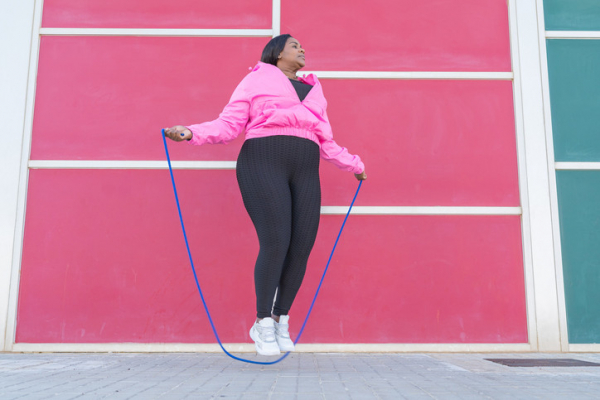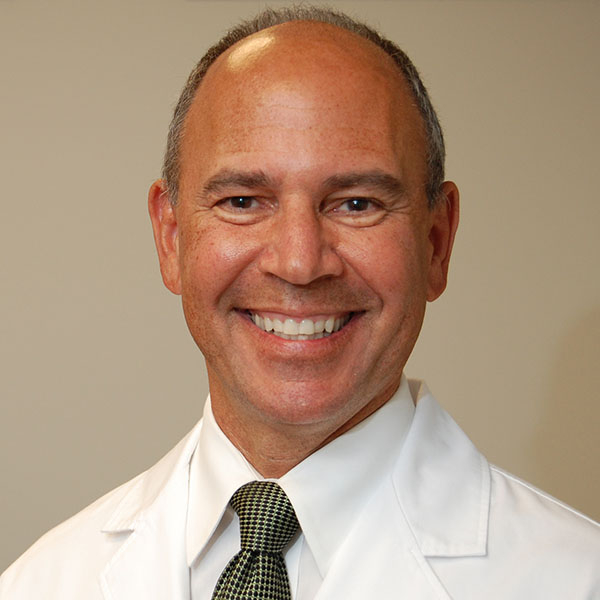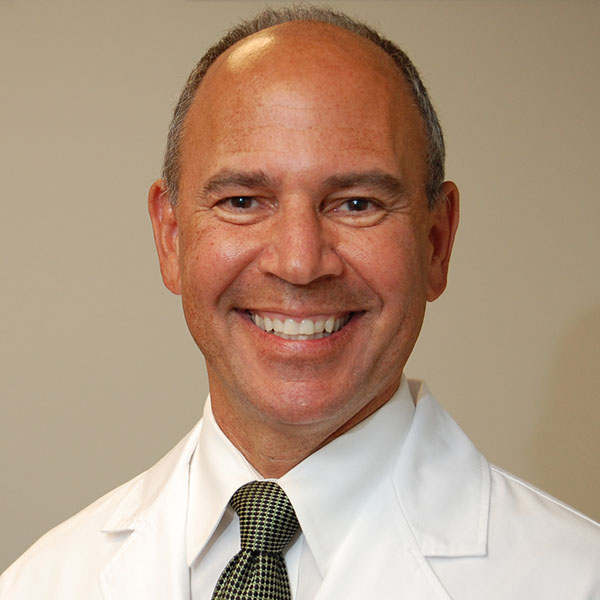
Plyometrics: Three explosive exercises even beginners can try

As a kid, I spent many Saturdays romping around my Florida neighborhood imitating Colonel Steve Austin, better known as The Six Million Dollar Man to avid TV watchers in the 1970s.
The popular show featured a bionic man — half human and half machine — who could jump from three-story buildings, leap over six-foot-high walls, and bolt into a full 60-mile-per-hour sprint. Naturally, these actions occurred in slow motion with an iconic vibrating electronic sound effect.
My own bionic moves involved jumping to pluck oranges from tree branches, hopping over anthills, and leaping across narrow ditches while humming that distinctive sound. I didn’t realize it, but this imitation game taught me the foundations of plyometrics — the popular training routine now used by top athletes to boost strength, power, and agility.
What are plyometrics?
Plyometric training involves short, intense bursts of activity that target fast-twitch muscle fibers in the lower body. These fibers help generate explosive power that increases speed and jumping height.
“Plyometrics are used by competitive athletes who rely on quick, powerful movements, like those in basketball, volleyball, baseball, tennis, and track and field,” says Thomas Newman, lead performance specialist with Harvard-affiliated Mass General Brigham Center for Sports Performance and Research. Plyometrics also can help improve coordination, agility, and flexibility, and offer an excellent heart-pumping workout.
Who can safely try plyometrics?
There are many kinds of plyometric exercises. Most people are familiar with gym plyometrics where people jump onto the top of boxes or over hurdles.
But these are advanced moves and should only be attempted with the assistance of a trainer once you have developed some skills and muscle strength.
Keep in mind that even the beginner plyometrics described in this post can be challenging. If you have had any joint issues, especially in your knees, back, or hips, or any trouble with balance, check with your doctor before doing any plyometric training.
How to maximize effort while minimizing risk of injury
- Choose a surface with some give. A thick, firm mat (not a thin yoga mat); well-padded, carpeted wood floor; or grass or dirt outside are good choices that absorb some of the impact as you land. Do not jump on tile, concrete, or asphalt surfaces.
- Aim for just a few inches off the floor to start. The higher you jump, the greater your impact on landing.
- Bend your legs when you land. Don’t lock your knees.
- Land softly, and avoid landing only on your heels or the balls of your feet.
Three simple plyometric exercises
Here are three beginner-level exercises to jump-start your plyometric training. (Humming the bionic man sound is optional.)
Side jumps
Stand tall with your feet together. Shift your weight onto your right foot and leap as far as possible to your left, landing with your left foot followed by your right one. Repeat, hopping to your right. That’s one rep.
- You can hold your arms in front of you or let them swing naturally.
- Try not to hunch or round your shoulders forward as you jump.
- To make this exercise easier, hop a shorter distance to the side and stay closer to the floor.
Do five to 15 reps to complete one set. Do one to three sets, resting between each set.
Jump rope
Jumping rope is an effective plyometric exercise because it emphasizes short, quick ground contact time. It also measures coordination and repeated jump height as you clear the rope.
- Begin with two minutes of jumping rope, then increase the time or add extra sets.
- Break it up into 10- to 30-second segments if two minutes is too difficult.
- If your feet get tangled, pause until you regain your balance and then continue.
An easier option is to go through the motions of jumping rope but without the rope.
Forward hops
Stand tall with your feet together. Bend your knees and jump forward one to two feet. Turn your body around and jump back to the starting position to complete one rep.
- Let your arms swing naturally during the hop.
- To make this exercise easier, hop a shorter distance and stay closer to the floor.
- If you want more of a challenge, hop farther and higher. As this becomes easier to do, try hopping over small hurdles. Begin with something like a stick and then increase the height, such as with books of various thicknesses.
Do five to 10 hops to complete one set. Do one to three sets, resting between each set.
About the Author

Matthew Solan, Executive Editor, Harvard Men's Health Watch
Matthew Solan is the executive editor of Harvard Men’s Health Watch. He previously served as executive editor for UCLA Health’s Healthy Years and as a contributor to Duke Medicine’s Health News and Weill Cornell Medical College’s … See Full Bio View all posts by Matthew Solan
About the Reviewer

Howard E. LeWine, MD, Chief Medical Editor, Harvard Health Publishing
Dr. Howard LeWine is a practicing internist at Brigham and Women’s Hospital in Boston, Chief Medical Editor at Harvard Health Publishing, and editor in chief of Harvard Men’s Health Watch. See Full Bio View all posts by Howard E. LeWine, MD

New guidelines aim to screen millions more for lung cancer

Lung cancer kills more Americans than any other malignancy. The latest American Cancer Society (ACS) updated guidelines aim to reduce deaths by considerably expanding the pool of people who seek annual, low-dose CT lung screening scans.
Advocates hope the new advice will prompt more people at risk for lung cancer to schedule yearly screening, says Dr. Carey Thomson, director of the Multidisciplinary Thoracic Oncology and Lung Cancer Screening Program at Harvard-affiliated Mount Auburn Hospital, and chair of the Early Detection Task Group for the ACS/National Lung Cancer Roundtable. Currently, fewer than one in 10 eligible people in the US follow through on recommended lung screenings.
What are the major changes in the new ACS lung cancer guidelines?
The updated ACS guidelines are aimed at high-risk individuals, all of whom have a smoking history. And unlike previous ACS recommendations, it doesn’t matter how long ago a person quit smoking. The updated guidelines also lower the bar on amount of smoking and widen the age window to seek screening, which aligns with 2021 recommendations issued by the US Preventive Services Task Force.
These changes combined may mean another six to eight million people will be eligible to have screening.
How many people get lung cancer?
Although lung cancer is the third most common malignancy in the United States, it’s the deadliest, killing more people than colorectal, breast, prostate, and cervical cancers combined. In 2023, about 238,000 Americans will be diagnosed with lung cancer and 127,000 will die of it, according to ACS estimates.
What is the major risk factor for lung cancer?
While people who have never smoked can get lung cancer, smoking and exposure to secondhand smoke is a major risk factor for this illness. Smoking is linked to as many as 80% to 90% of lung cancer deaths, according to the CDC.
Indeed, people who smoke are 15 to 30 times more likely to develop or die from lung cancer than those who don’t. The longer someone smokes and the more cigarettes they smoke each day, the higher their risks.
Is lung cancer easier to treat if found in early stages?
Yes. As with many cancers, detecting lung malignancies in their earliest stages is pivotal to improving survival.
Depending on the type of lung cancer diagnosed, up to 80% to 90% of people with a single, early-stage tumor that can be removed surgically can survive five years or longer, says the American Society of Clinical Oncology. The number of people who survive long-term becomes smaller as tumors grow larger, and if they spread to lymph nodes or other areas of the body.
Should you consider lung CT screening?
The updated ACS guidelines recommend screening if you:
- Are 50 to 80 years old. This age range is expanded from the prior ACS recommended cutoff of 55 to 74.
- Are a current or previous smoker. This includes anyone who smoked, not just smokers who quit within the past 15 years.
- Smoked 20 or more pack-years. This means smoking an average of 20 cigarettes per day for 20 years or 40 cigarettes per day for 10 years. Previously, the eligibility cutoff was 30 or more pack-years.
“While an expansion in the number of people screened for lung cancer will find additional early tumors, it also means more false positives will be detected,” says Howard LeWine, MD, Chief Medical Editor at Harvard Health Publishing. False positives are worrisome spots on a CT scan that are not cancer. But they usually require additional testing, perhaps a biopsy and even surgery for something that was harmless.
Before scheduling a low-dose CT lung screening, you’ll need to talk to a health professional about the screening process, your risks, whether it will be covered by your health insurance. Previously, an in-person medical appointment was required.
Why did the ACS change the years-since-quitting screening requirement?
Much international research suggests that the number of years since someone stopped smoking has little or no bearing on their risk of developing lung cancer, says Dr. Thomson.
“You have an equal likelihood of developing lung cancer whether you quit more than 15 years ago or more recently,” she says. “The recommendations on the national scene say that we need to be screening more people and make it easier to be screened. One of the ways to do that is to drop the quit history requirement.”
If you’re eligible for screening, how often should you have it?
Every year, says the ACS.
But why not screen for lung cancer for several years and then take a break, as is done with a malignancy such as cervical cancer? Research hasn’t been done to demonstrate that this type of approach is safe, Dr. Thomson says.
“We know that a large percentage of lung cancers identified in people through low-dose CT scans are identified after their first year of screening,” she says. “And some forms of lung cancer can move quickly, which is part of the reason it’s as deadly as it is.”
Did all guidelines organizations drop the years-since-quitting requirement?
No. The Centers for Medicare & Medicaid Services (CMS) and the U.S. Preventive Services Task Force — which, along with the ACS and other groups, recommend national standards for screenings — haven’t yet signed on to the ACS approach. These two groups maintain that only smokers who quit 15 or fewer years ago should remain eligible for screening.
However, guidelines issued by the National Comprehensive Cancer Network mesh with the new ACS recommendations by not having a years-since-quitting threshold.
Because Medicare and other health insurers may have slightly different rules to determine payment for lung cancer CT screening, it’s best to confirm this with your health care provider or insurer before getting tested.
About the Author

Maureen Salamon, Executive Editor, Harvard Women's Health Watch
Maureen Salamon is executive editor of Harvard Women’s Health Watch. She began her career as a newspaper reporter and later covered health and medicine for a wide variety of websites, magazines, and hospitals. Her work has … See Full Bio View all posts by Maureen Salamon
About the Reviewer

Howard E. LeWine, MD, Chief Medical Editor, Harvard Health Publishing
Dr. Howard LeWine is a practicing internist at Brigham and Women’s Hospital in Boston, Chief Medical Editor at Harvard Health Publishing, and editor in chief of Harvard Men’s Health Watch. See Full Bio View all posts by Howard E. LeWine, MD

Beyond the usual suspects for healthy resolutions

Early in the new year, promises to reboot your health typically focus on diet, exercise, and weight loss. And by now you may have begun making changes — or at least plans — to reach those goals. But consider going beyond the big three.
Below are 10 often-overlooked, simple ideas to step up personal health and safety. And most won’t make you break a sweat.
Review your health portals
Your medical information is kept in electronic records. You have access to them through the patient portal associated with your doctor’s office. Set aside time to update portal passwords and peruse recent records of appointments, test results, and notes your doctor took during your visits.
“Many studies have shown that when patients review the notes, they remember far better what went on during interactions with their clinicians, take their medicines more effectively, and pick up on errors — whether it’s an appointment they forgot to make or something their doctor, nurse, or therapist got wrong in documenting an encounter,” says Dr. Tom Delbanco, the John F. Keane & Family Professor of Medicine at Harvard Medical School and cofounder of the OpenNotes initiative, which led shared clinician notes to become the new standard of care.
Doing this can help you become more engaged in your care. “We know from numerous studies that engaged patients who share decisions with those caring for them have better outcomes,” he adds.
Ask about health insurance freebies
Your insurance plan may offer perks that can lead to better health, such as:
- weight loss cessation programs
- quit-smoking programs
- free or reduced gym memberships.
Some insurers even offer breastfeeding counseling and equipment. Call your insurance company or take a close look at their website to find out if there’s anything that would help you.
Get rid of expired medications
Scour your cabinets for expired or unneeded drugs, which pose dangers for you and others. Look for prescription and over-the-counter medications (pills, potions, creams, lotions, droppers, or aerosol cans) as well as supplements (vitamins, minerals, herbs).
Bring your finds to a drug take-back site, such as a drugstore or law enforcement office, or a medical waste collection site such as the local landfill.
As a last resort, toss medications into the trash, but only after mixing them with unappealing substances (such as cat litter or used coffee grounds) and placing the mixture in a sealable plastic bag or container.
Invest in new sneakers
The wrong equipment can sabotage any exercise routine, and for many people the culprit is a worn pair of sneakers. Inspect yours for holes, flattened arch support, and worn treads. New sneakers could motivate you to jazz up your walking or running routine.
For example, if it’s in the budget, buy a new pair of walking shoes with a wide toe box, cushy insoles, good arch support, a sturdy heel counter (the part that goes around your heel), stretchy uppers, and the right length — at least half an inch longer than your longest toe.
Cue up a new health app
There are more than 350,000 health apps geared toward consumer health. They can help you with everything from managing your medications or chronic disease to providing instruction and prompts for improving diet, sleep, or exercise routines, enhancing mental health, easing stress, practicing mindfulness, and more.
Hunt for apps that are free or offer a free trial period for a test drive. Look for good reviews, strong privacy guardrails, apps that don’t collect too much information from you, and those that are popular — with hundreds of thousands or millions of downloads.
Make a schedule for health screenings and visits
Is it time for a colonoscopy, mammogram, hearing test, prostate check, or comprehensive eye exam? Has it been a while since you had a dermatologist examine the skin on your whole body? Should you have a cholesterol test or other blood work — and when is a bone density test helpful?
If you’re not sure, call your primary care provider or any specialists on your health team to get answers.
Four more simple healthy steps
The list of steps you can take this year to benefit your health can be as long as you’d like it to be. Jot down goals any time you think of them.
Here are four solid steps to start you off:
- Take some deep breaths each day. A few minutes of daily slow, deep breathing can help lower your blood pressure and ease stress.
- Get a new pair of sunglasses if your old ones have worn lenses. Make sure the new pair has UV protection (a special coating) to block the sun’s ultraviolet (UV) light, which can cause eye damage and lead to permanent vision loss.
- Make a few lunch dates or phone dates with friends you haven’t seen in a while. Being socially connected wards off loneliness and isolation, which can help lower certain health risks.
- Do a deep cleaning on one room in your home per week. Dust and mold can trigger allergies, asthma, and even illness.
You don’t have to do all of these activities at once. Just put them on your to-do list, along with the larger resolutions you’re working on. Now you’ll have a curated list of goals of varying sizes. The more goals you reach, the better you’ll feel. And that will make for a very healthy year, indeed.
About the Author

Heidi Godman, Executive Editor, Harvard Health Letter
Heidi Godman is the executive editor of the Harvard Health Letter. Before coming to the Health Letter, she was an award-winning television news anchor and medical reporter for 25 years. Heidi was named a journalism fellow … See Full Bio View all posts by Heidi Godman
About the Reviewer

Howard E. LeWine, MD, Chief Medical Editor, Harvard Health Publishing
Dr. Howard LeWine is a practicing internist at Brigham and Women’s Hospital in Boston, Chief Medical Editor at Harvard Health Publishing, and editor in chief of Harvard Men’s Health Watch. See Full Bio View all posts by Howard E. LeWine, MD